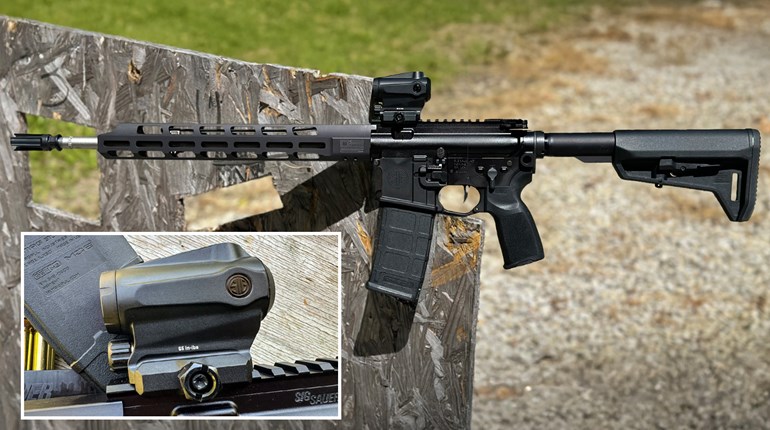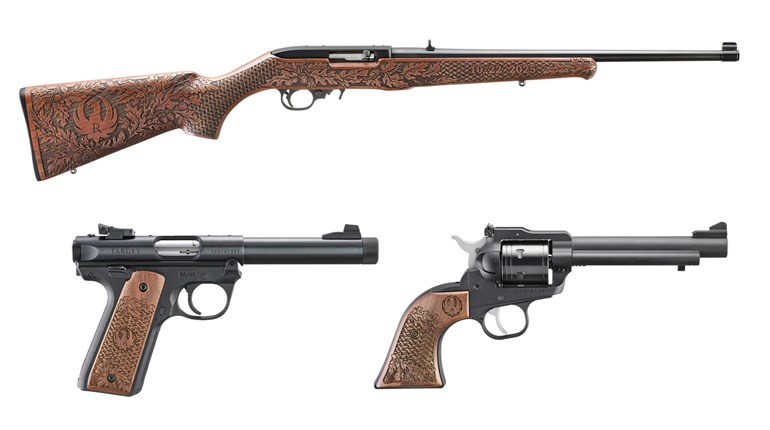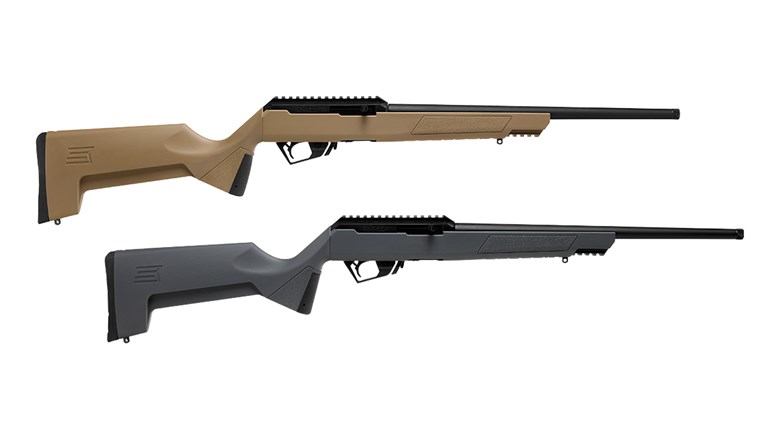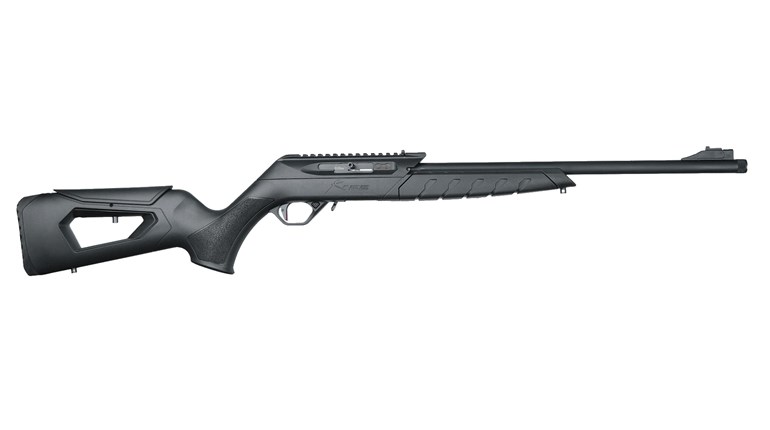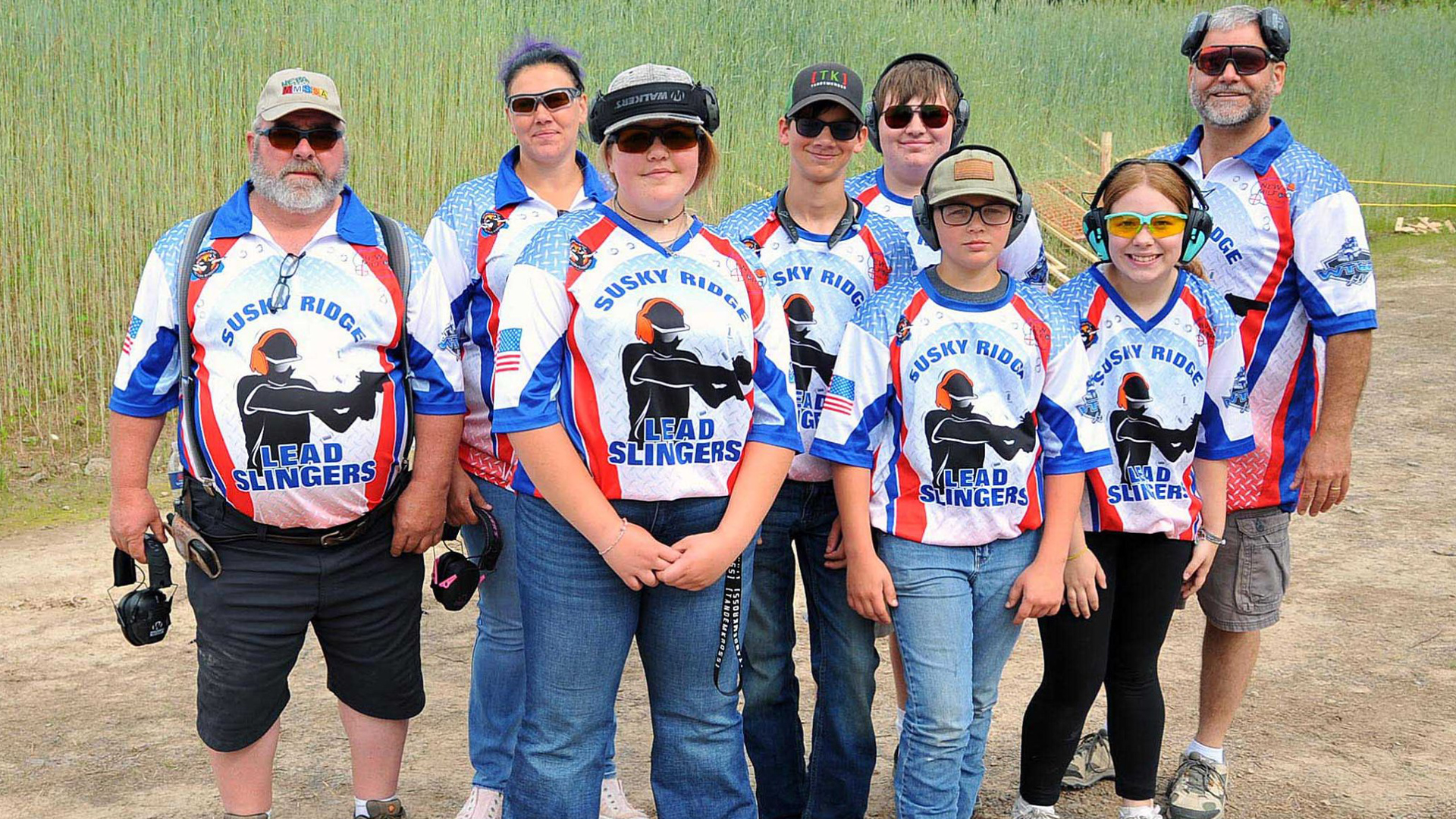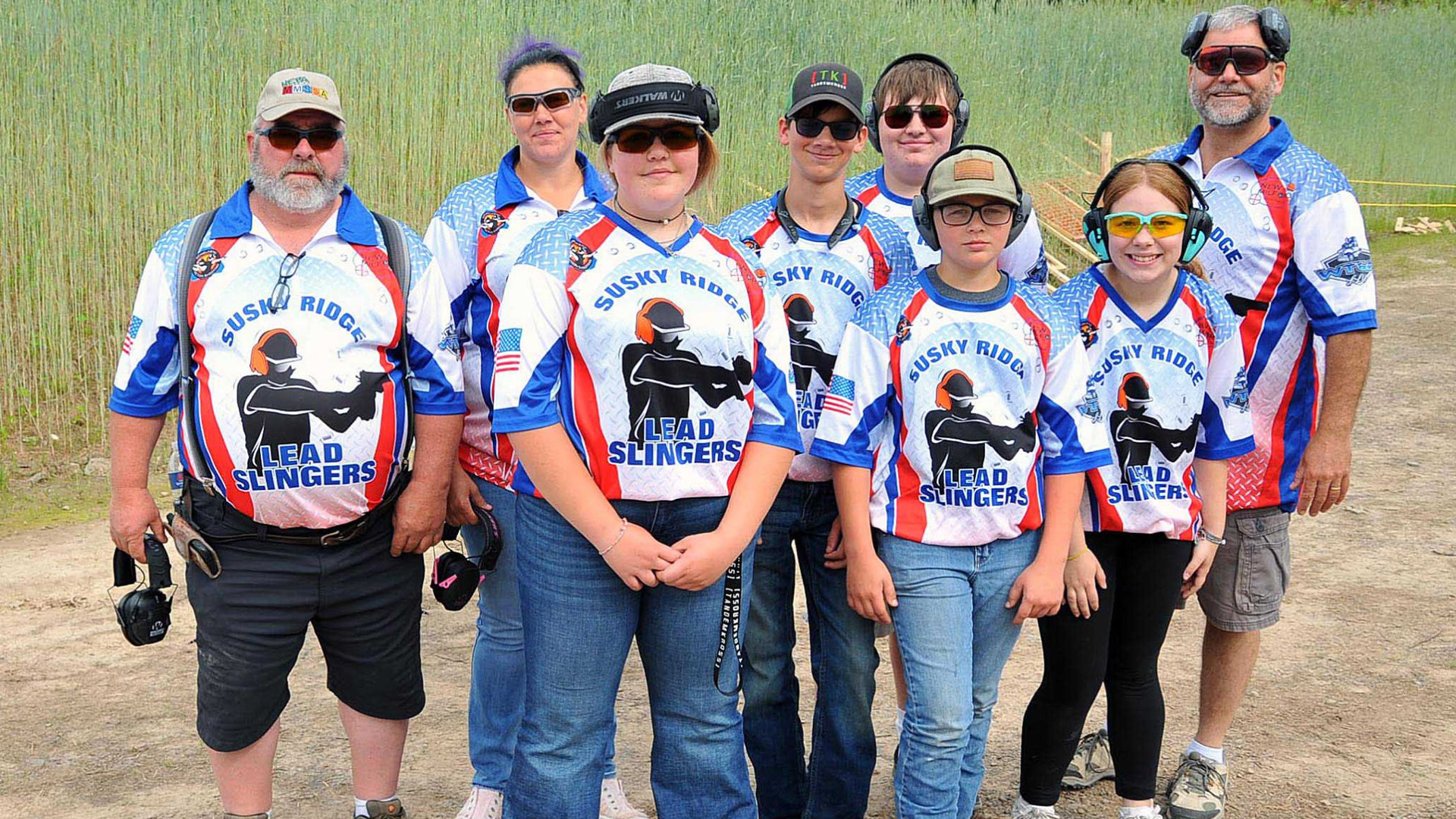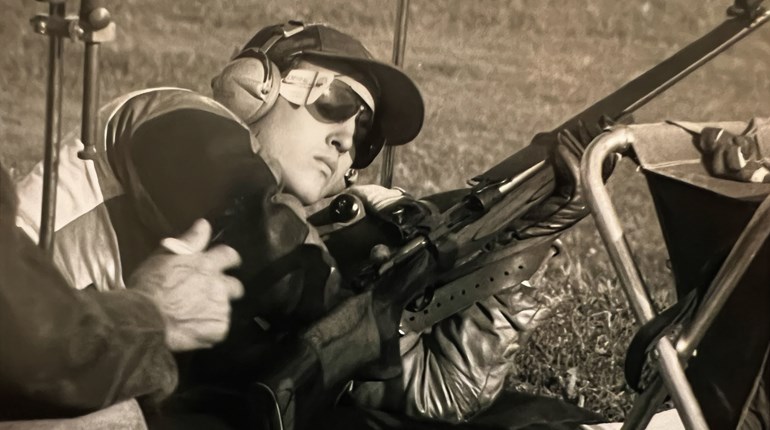
Southpaws can find things a bit awkward in a right-handed world, and that’s especially true if they’re competitive shooters. Guns are geared to right-handers, and southpaws just have to adjust. For those tired of adjusting, Ruger offers a solution.

The Gun
Introduced in mid-August of this year, the Ruger Custom Shop Left-Hand Eject 10/22 Competition (#31110, $899, Ruger.com) is a true left-hand .22 LR semi-automatic rifle. True to its name, the ejection port and bolt handle are on the left side. The safety is also made for southpaws and is set to ON from the right, and OFF from the left. An ambidextrous magazine release makes for easy operation.

Another difference from the standard models is the 10-round rotary magazine. The left-side ejection required a slight change in feed lip design. The magazines are specific to this model and will not interchange with standard Ruger magazines. They are easily identified by a green follower, while standard magazines use red. The magazines will initially be offered in 10-round capacity, but the larger capacity BX-15 and BX-25 should appear soon.

Aside from that, the Model 31110 is identical to the right-hand version, Model 31120. It’s built on a hard-coat anodized, CNC machined receiver from stress relieved 6061-T6511 aluminum alloy, and the receiver incorporates a rear cleaning port to allow cleaning from the breech. The stock is a speckled black and gray laminate with a dual-lug bedding system. A fully-adjustable cheek piece allows for a precise cheek weld, and the length of pull is 13.5 inches.

The Ruger is equipped with a 16.12-inch, cold-hammer, forged alloy steel bull barrel and detachable muzzle brake in 1/2x28-inch thread. Iron sights are absent, while a 5.5-inch Picatinny rail is attached for optics mounting.
Ruger’s BX trigger is installed, and my test model measured a 2.8-pound pull weight, with just a hint of take-up, a clean break and a quick re-set. In addition, the match bolt release releases the bolt with a pull on the handle instead of an under-lever.

At The Range
After receiving the gun and the initial inspection, I did a quick barrel swab and lube. That was the only maintenance done throughout the test.
The attached Leupold 2-7X 33 mm rimfire scope was on a low mount, and I was unable to lower the cheek piece enough to be comfortable. But it’s easily removed, which gave me a stock fit no different than the Ruger Takedown Light I shoot in Steel Challenge. I could easily see how the cheek piece would be an asset with a higher mounted sight.

Ammunition on hand consisted of CCI Mini-Mag 36-grain HP, Eley Target 40-grain standard velocity RN and CCI Clean 22 High Speed (red). A recent gun store visit resulted in a 50-round box of Aguila Super Extra 40-grain RN standard velocity and a 500-round box of Remington Thunderbolt 40-grain lead high speed that had just come from the new Remington plant.
From the 25-yard bench on my backyard range, I zeroed the gun with the Mini-Mag and then ran the other loads offhand for function tests. There were two misfires with the Aguila, but everything else ran fine.

With the initial sight-in and function tests done, I arrived at my gun club’s rifle range on a dead-calm morning. For the 50-yard session, I used 10 three-inch round Caldwell burst targets on a large white backing. That allowed two five-round groups of each of the test loads to be fired. There was no need for an initial sight-in because the 25-yard zero was close enough to get the groups somewhere on the targets and keep them separated. My notebook kept track of which group went on which target.
With a solid long bag front rest and an elbow bag to control butt stock wobble, the crisp Leupold crosshairs and the excellent trigger produced a high shot-to-shot confidence. The only surprise was when I walked down to collect the targets for later measuring.

I could have covered both of the Remington Thunderbolt groups with a penny. That didn’t jibe with my past experience with this load under the Freedom Group banner. My impression previously was that the load was acceptable for plinking and would work for Steel Challenge if you could tolerate the occasional failures to feed and misfires. However, this was a new box from the refurbished Arkansas factory, and in looking at those two groups, it seemed to me that the new management takes quality control seriously. I then decided to include it in the 100-yard tests. I had already decided not to shoot the CCI Clean 22 at 100 yards because that really wasn’t its role. I had considered the Aguila, but a look at the 50-yard groups convinced me it would be a waste of time.

The 100-yard session went quicker with just the three loads. I did have to set up a separate target to get the come-ups needed, but the scope responded. A 7X scope isn’t my first choice at 100 yards, but it was what I had, so I used six Caldwell Tip Top targets to provide a better crosshair hold.
The wind stayed down, and the accuracy table will show the Ruger would be no slouch on the 1.75-inch 10-ring used in many types of matches.
By this time there were about 250 rounds through the gun with the only malfunctions being the Aguila misfires. I had initially thought about running some Steel Challenge with it, but the three supplied magazines weren’t enough for a match. And the ejected rounds whacking my support arm were most distracting.
It did help me understand the tribulations southpaws go through shooting a standard gun. But they won’t have to endure that with the Ruger Left-Hand 10/22 Competition.
Accuracy Table

All photos by Peter Fountain unless otherwise indicated.
Read more: The History of Ruger













